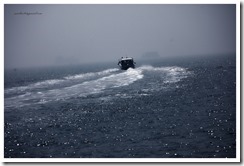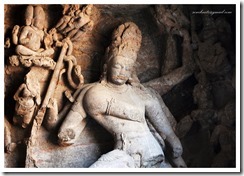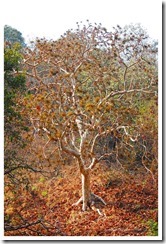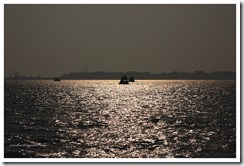A German theoretical physicist known by the name of Werner Heisenberg, sometime in 1927 espoused one of the primal principles of life, the unparalleled axiom of Causality, in the sphere of sub-atomic matter. And he was finally seen walking out with the Nobel Prize for Physics, that too, within half a decade. Though it was not as easy as it seems here. You do not get awarded with a Nobel Prize for doing nothing, for that you do have Annual Awards at your workplace.
Coming back to Heisenberg, for a lazy mind like myself, there is a prevailing inclination to think, “Why on earth or hell, do I need to know the speed or position of a particle, which I can’t even see in this or any other lifetime!” and maybe “You little quark, to hell with you.” And as for the latter, my guess is that, my boss thinks the same of me. The theory is causal both in its nature and intent. To measure the position of a particle, you have to affect its speed (you hit it with a photon and God knows what else) and thus the speed you would measure would be the post-collision one. The cause in question is locating the particle and the effect is a change in its velocity.
Newton had applied this philosophy in his third law of motion and mango people like us knowingly or unknowingly apply this principle daily in our lives. Especially in Mumbai, auto-wallahs and taxi bhaiyas can be hailed as supreme masters of Newtonian physics. By applying any or all of his three laws sometimes simultaneously in any given interval of time (also called delta t), these Newtonian masters register a yet greater rate of application than their own respiration rates. Had they studied these laws a bit further upon, they would have most probably ended up in some lonely cubicle, applying the same set of laws but in a different manner with a perhaps higher degree of sophistication like silent incantations under breath, commenting and liking blogs without any legible content and sometimes even daring to dream beyond IIMs, thanks to ponytail. And in the latter case, the general populace and more importantly their kinfolk would have been mercifully spared from the Effect set, promptly replaced by their bosses and by people who do not have to sit in cubicles but have the long nose to make others sit.
Even at-first perplexed freshers from various graduate and post-graduate streams, who chose the haven of Bollywood over lesser known cities, to catch one glimpse of a certain Bollywood diva, imbibe these laws pretty quickly. They would be seen in local trains, deftly whistling and kissing around (only flying ones, stationary ones can still land you up at the nearest police-station), which is usually taken as a semaphore for letting sub-atomic movement in a crowd. The intensityread desperation and the cadence of whistling/kissing can be directly proportional to the time by which one thinks one is late to work. Therefore at most of the workplaces, the early bird award usually goes to the person arriving at office just before noon, which otherwise cannot be shared with the office boy. Going by departments, it seems that the HR department (barring a few losers who have a quite pervasive presence across continents) follows the laws of thermodynamics rather than the laws of motion. Here the exception is the absence of any effect but a whole lot of causes. Yes it does defy many laws, but you see causes engender further causes and it goes on and on. People who are usually so busy, that it becomes difficult impossible for them to locate even themselves in their own cubicles after 5:00 pm. And they share the lion’s share of organizational work. Organizational Change and Development, Leadership Programmes and all such gingerly designed programmes take bulk of their working hours both in designing and implementation. In consonance with the zeroth law of thermodynamics, these designs remain in equilibrium with each other and also with their heads, probably later with their graves too. If one of those designs on a rare occasion tries to spout itself out, it’s made to delve into another form of energy as per the first law of thermodynamics. It’s called process improvement and it’s cost can exceed the next five years of remuneration of the entire department.
There is yet another department which closely resembles the thermodynamics department but is elementally very different. Even Erwin Schrodinger’s equation with all his partial derivatives, cannot completely explain the laws governing this one. For they are neither particles nor waves. They are admin. From your flights abroad to your flights to the loo, they cover the entire spectrum. They research on your telephone calls, coffee, conveyances and even the amount of tissues that you could have used in the loo. Given these grounds, most of them would have got a Nobel Prize for welfare economics. They manage costs, not just the checks and balances but the allocations and de-allocations too. You would probably have loved them too.
Love thy neighbour and thy colleagues even more.
Coming back to Heisenberg, for a lazy mind like myself, there is a prevailing inclination to think, “Why on earth or hell, do I need to know the speed or position of a particle, which I can’t even see in this or any other lifetime!” and maybe “You little quark, to hell with you.” And as for the latter, my guess is that, my boss thinks the same of me. The theory is causal both in its nature and intent. To measure the position of a particle, you have to affect its speed (you hit it with a photon and God knows what else) and thus the speed you would measure would be the post-collision one. The cause in question is locating the particle and the effect is a change in its velocity.
Newton had applied this philosophy in his third law of motion and mango people like us knowingly or unknowingly apply this principle daily in our lives. Especially in Mumbai, auto-wallahs and taxi bhaiyas can be hailed as supreme masters of Newtonian physics. By applying any or all of his three laws sometimes simultaneously in any given interval of time (also called delta t), these Newtonian masters register a yet greater rate of application than their own respiration rates. Had they studied these laws a bit further upon, they would have most probably ended up in some lonely cubicle, applying the same set of laws but in a different manner with a perhaps higher degree of sophistication like silent incantations under breath, commenting and liking blogs without any legible content and sometimes even daring to dream beyond IIMs, thanks to ponytail. And in the latter case, the general populace and more importantly their kinfolk would have been mercifully spared from the Effect set, promptly replaced by their bosses and by people who do not have to sit in cubicles but have the long nose to make others sit.
Even at-first perplexed freshers from various graduate and post-graduate streams, who chose the haven of Bollywood over lesser known cities, to catch one glimpse of a certain Bollywood diva, imbibe these laws pretty quickly. They would be seen in local trains, deftly whistling and kissing around (only flying ones, stationary ones can still land you up at the nearest police-station), which is usually taken as a semaphore for letting sub-atomic movement in a crowd. The intensity
There is yet another department which closely resembles the thermodynamics department but is elementally very different. Even Erwin Schrodinger’s equation with all his partial derivatives, cannot completely explain the laws governing this one. For they are neither particles nor waves. They are admin. From your flights abroad to your flights to the loo, they cover the entire spectrum. They research on your telephone calls, coffee, conveyances and even the amount of tissues that you could have used in the loo. Given these grounds, most of them would have got a Nobel Prize for welfare economics. They manage costs, not just the checks and balances but the allocations and de-allocations too. You would probably have loved them too.
Love thy neighbour and thy colleagues even more.
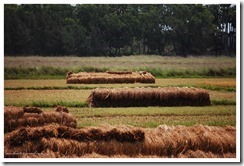
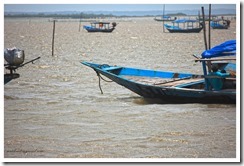
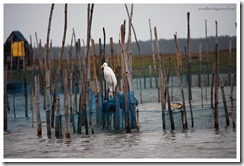

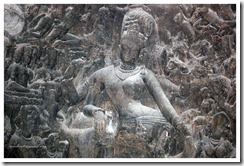
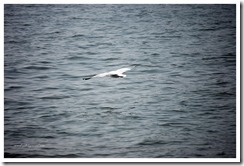 of Gharapuri village, we set out on foot for a journey upwards, post a brief toy-train ride which hardly lasted 5-7 minutes. The stairway being flocked by trinket & artefact vendors on either side, offered a rowdy shade of restlessness from the sun’s shining blaze. The monkeys however saved the grace with their usual mimics of chirpy nothings. And at the end of the stairway, a tired queue of travellers stood at the ticket counters for the final visit to the caves of our interest. Two rather expensive looking passes from the ASI (Archaeological Survey of India) with an allusion to the UNESCO World Heritage Sites, all for rather a paltry sum of twenty rupees, got us inside the garden which beheld the caves.
of Gharapuri village, we set out on foot for a journey upwards, post a brief toy-train ride which hardly lasted 5-7 minutes. The stairway being flocked by trinket & artefact vendors on either side, offered a rowdy shade of restlessness from the sun’s shining blaze. The monkeys however saved the grace with their usual mimics of chirpy nothings. And at the end of the stairway, a tired queue of travellers stood at the ticket counters for the final visit to the caves of our interest. Two rather expensive looking passes from the ASI (Archaeological Survey of India) with an allusion to the UNESCO World Heritage Sites, all for rather a paltry sum of twenty rupees, got us inside the garden which beheld the caves.